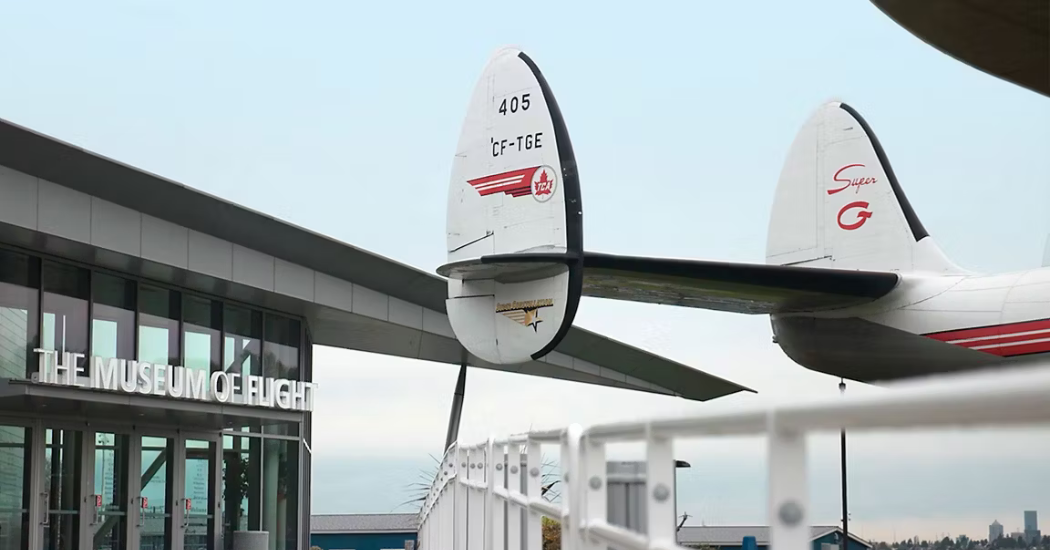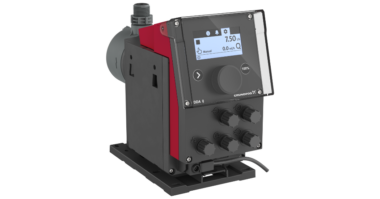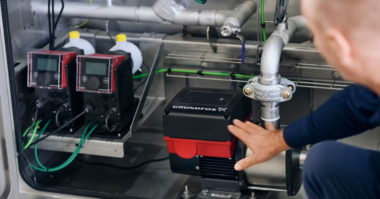Distributed Pumping retrofit for chilled water system keeps priceless aviation exhibits pristine
A redesign of the Museum of Flight’s cooling system using Grundfos Distributed Pumping resulted in 74% pump energy savings and an auto-balanced system maintaining exact temperature in each corner of the six-story, glass-walled gallery.
Executive summary
The Museum of Flight decided to implement Grundfos Distributed Pumping chilled water system design when retrofitting their HVAC system. The solution’s automatic balancing has not only generated 74% savings in pumping energy during the 2023 cooling season, but also ensures the preservation of more than 40 historic aircraft from the first century of flight by reliably maintaining constant temperature throughout the museum’s 3-million-cubic-foot, six-story, glass-enclosed Great Gallery.
The situation
The Museum of Flight in Seattle, WA, USA is the largest independent, non-profit air and space museum in the world and home to thousands of exhibits from the history of air and space flight.
The Museum of Flight had been running its original cooling equipment since its installation in 1987.
With the equipment aging and energy costs rising, it became increasingly apparent the Great Gallery’s cooling system was approaching the end of its life cycle. It suffered from poor Delta T, was poorly balanced and unable to reach the design temperature everywhere within the building – a critical factor when considering that maintaining ±2° from the set temperature is essential for the preservation of the historic aircraft.
The museum therefore decided to embark on a project of upgrading and retrofitting the gallery’s cooling system, emphasising the need for increasing the energy efficiency of all its components.
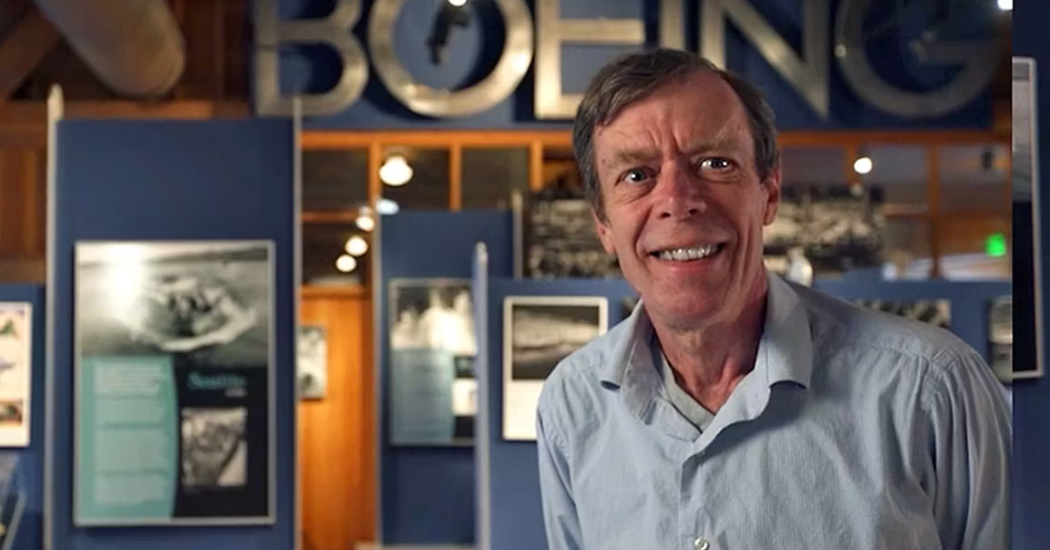 “The more we looked into Distributed Pumping, early estimates were conservatively at 40%, but as we’ve developed the plans further we expect to attain even higher percentages of energy savings.”
“The more we looked into Distributed Pumping, early estimates were conservatively at 40%, but as we’ve developed the plans further we expect to attain even higher percentages of energy savings.”
Fenton Kraft, Engineering Services Manager, The Museum of Flight
The solution
As the museum’s engineers began investigating replacing the constant speed, chilled and condensing water pumps with high-efficiency, variable speed pumps, they became aware
of Grundfos Distributed Pumping— a solution that replaces large centralized pumps and traditional balancing and control valves with smaller, more intelligent pumps throughout the building delivering flow and pressure only when and where it’s needed, automatically balancing the system and significantly reducing energy consumption.
“It became readily apparent there was a real energy savings opportunity in Distributed Pumping, because you’d eliminate the designed-in friction and pressure drops that were necessary for our old control valves to have a good accurate control range,” explains Fenton Kraft, Engineering Services Manager at The Museum of Flight. “Those valves come with an energy penalty that is pretty significant, and the main system pumps that were previously installed and even any new pumps would have to overcome that kind of pressure drop. So as we looked at Distributed Pumping, it basically eliminated all the friction, all the pressure drop and all the horsepower requirements to overcome those.”
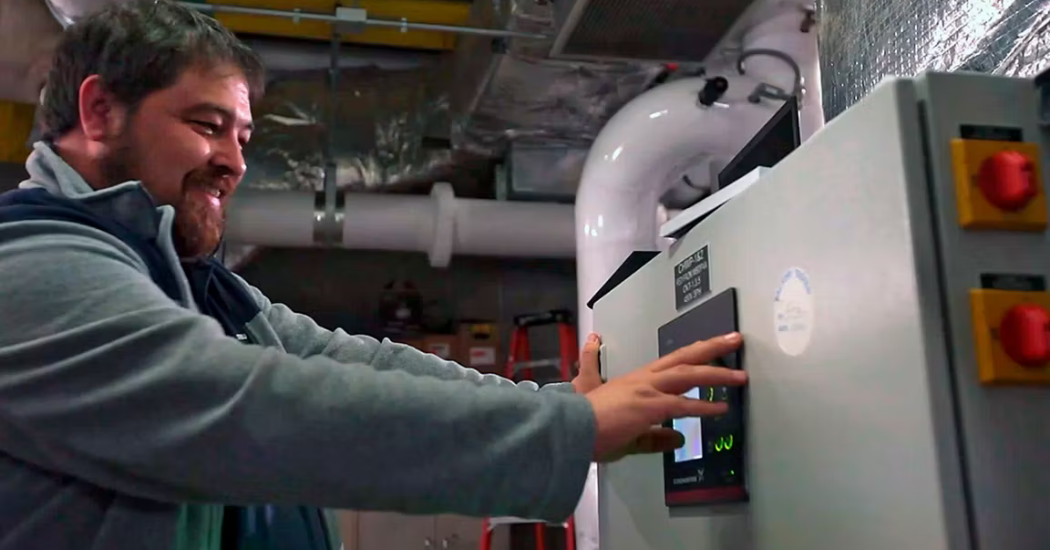 “This Distributed Pumping system takes out a lot of complexity that traditional pumping systems have. All the programming is built into the primary pump controller and the distributed pumps. We simply started up the pumps, about a ten-minute process for each pump, and we were up and running. We didn’t have to write and develop a sequence of operations or program a controller. That’s what makes these Distributed Pumping systems so turnkey and simple to operate on day one and for the life of the building.”
“This Distributed Pumping system takes out a lot of complexity that traditional pumping systems have. All the programming is built into the primary pump controller and the distributed pumps. We simply started up the pumps, about a ten-minute process for each pump, and we were up and running. We didn’t have to write and develop a sequence of operations or program a controller. That’s what makes these Distributed Pumping systems so turnkey and simple to operate on day one and for the life of the building.”
Chris Ireland, Technical Sales Manager, Grundfos
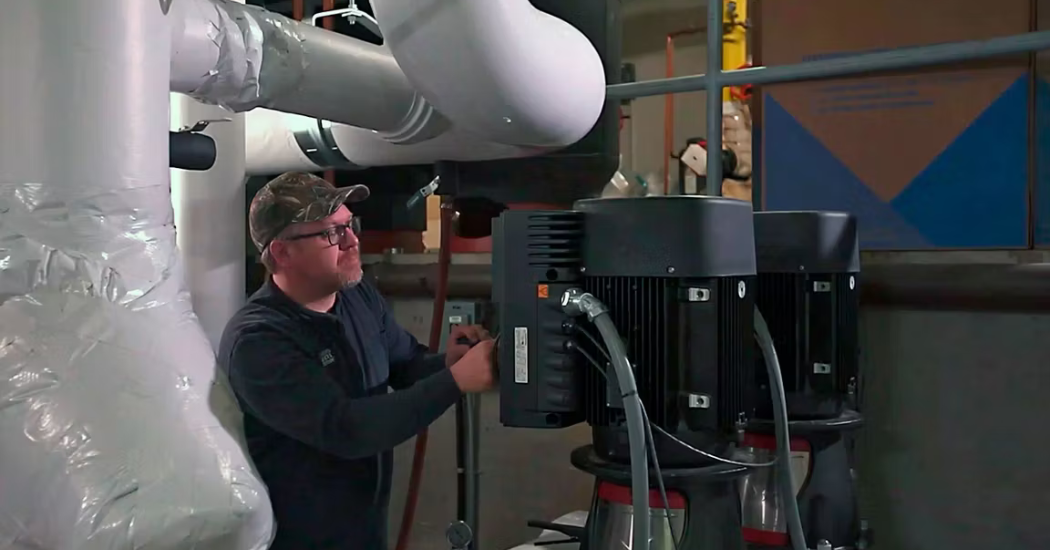 In collaboration with local sales partner Hurley Engineering and a team of Grundfos experts, an optimized Distributed Pumping system was designed with the following specification:
In collaboration with local sales partner Hurley Engineering and a team of Grundfos experts, an optimized Distributed Pumping system was designed with the following specification:
- 10°F chilled water Delta T
- 1 new water-cooled chiller
- 1 new cooling tower
- 1 new AHU (to extend the existing 10 AHU system)
The new chilled water system includes:
- Hydro MPC-E 2 CRE 125-1-1 (condenser water pump)
- Hydro MPC-E 2 CRE 95-1-1 (primary pump)
- 12 MAGNA3s (one distributed pump placed at each AHU, and two placed at the largest AHU)
“With Distributed Pumping, we remove traditional balancing and control valves,” describes Pavel Mirchev, Lead US Technical Engineer, Distributed Pumping. “Instead of having one pump that makes high pressure for the entire building, we have smaller primary pumps in the mechanical room, and we put a pump on every load that makes exactly the pressure and the flow that is needed. So in this way we put just the right amount of energy in the water, and we don’t need to waste it with valves.”
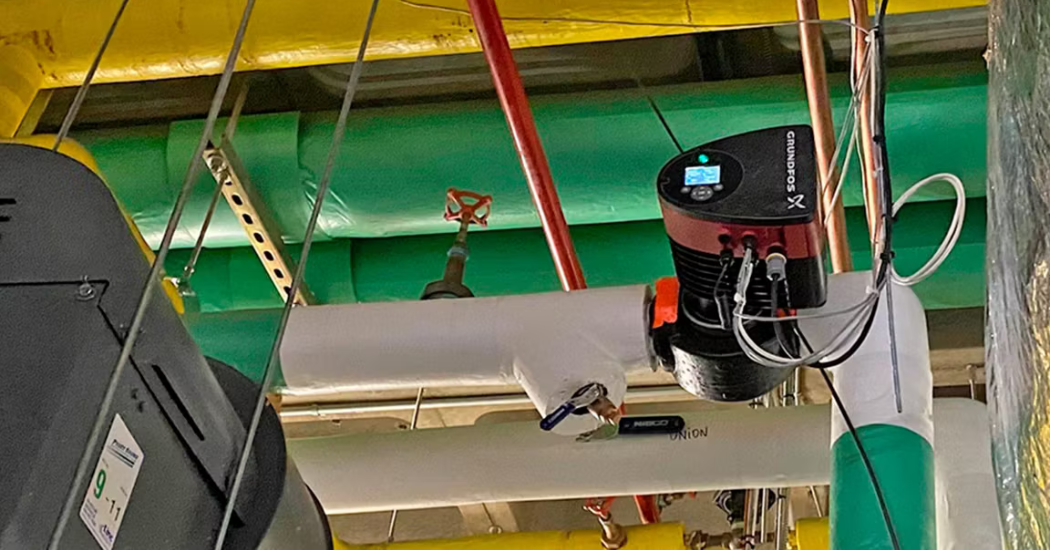 “Distributed Pumping removes traditional balancing and control valves. Smaller primary pumps in the mechanical room and a pump on every load put just the right amount of energy in the water so we don’t need to waste it with valves.”
“Distributed Pumping removes traditional balancing and control valves. Smaller primary pumps in the mechanical room and a pump on every load put just the right amount of energy in the water so we don’t need to waste it with valves.”
Pavel Mirchev, Lead US Distributed Pumping Technical Engineer, Grundfos
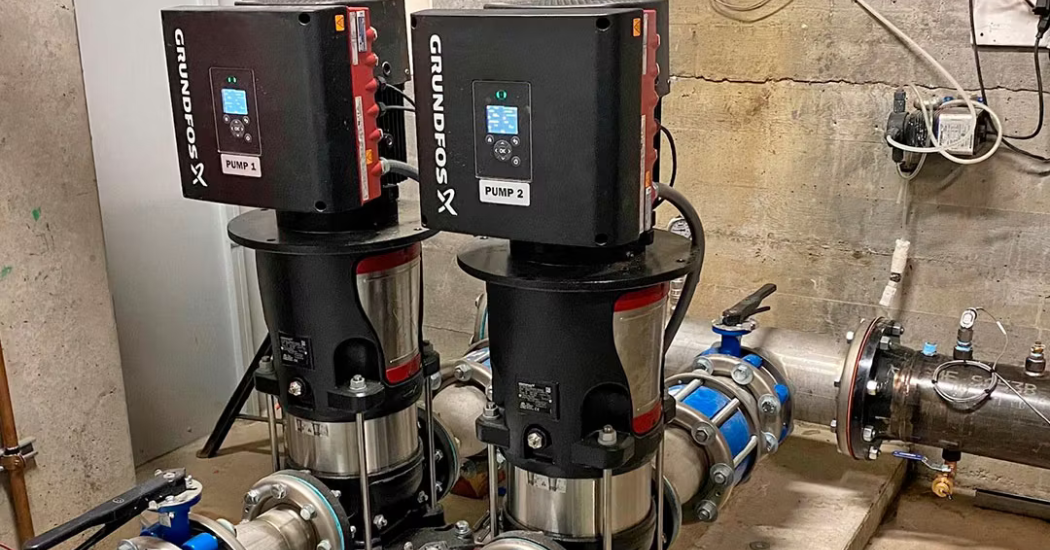 The outcome
The outcome
The cooling system at the Museum of Flight improved its performance significantly after the conversion to Grundfos Distributed Pumping. Optimal temperatures are achieved at all locations in the Great Gallery, which has reduced the cooling system’s operating hours.
For the entire 2023 cooling season (mid-April to mid-October), the new Distributed Pumping system resulted in 74% pump energy savings, equivalent to 34,000 kWh or $3,400. This does not take into account even further savings from the chiller and cooling tower energy reduction due to the optimized operation and reduced working hours.
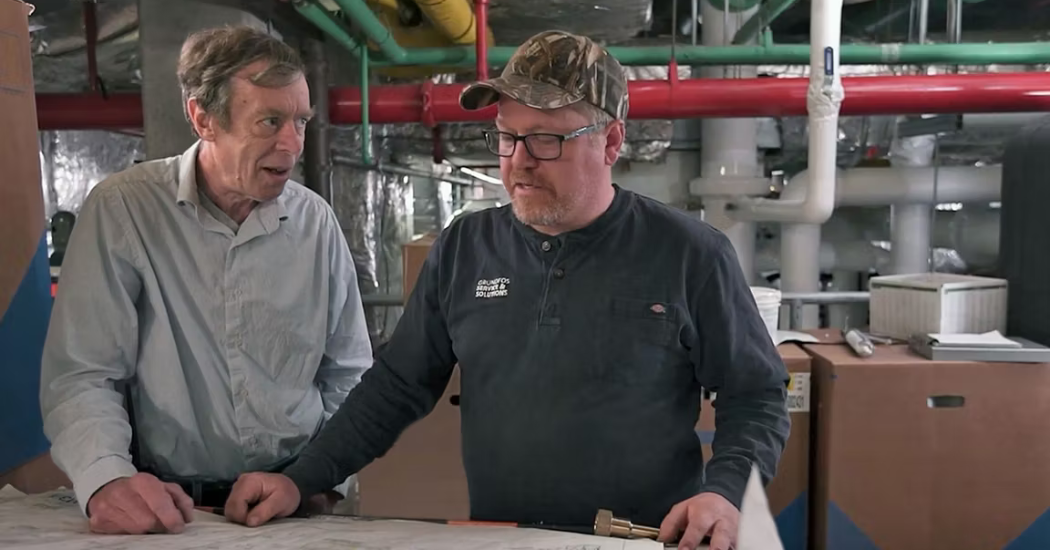 “All through the design process, we’ve been able to bounce back and forth ideas and really establish an optimal design for our new system. Our experience with both our local distributor and all the various specialists at Grundfos has been exceptional.”
“All through the design process, we’ve been able to bounce back and forth ideas and really establish an optimal design for our new system. Our experience with both our local distributor and all the various specialists at Grundfos has been exceptional.”
Fenton Kraft, Engineering Services Manager, The Museum of Flight
Grundfos supplied the following equipment for the distributed pumping system:
- Hydro MPC-E 2 CRE 125-1-1 (condenser water pump)
- Hydro MPC-E 2 CRE 95-1-1 (primary pump)
- 12 MAGNA3s (one distributed pump placed at each AHU, and two placed at the largest AHU)

